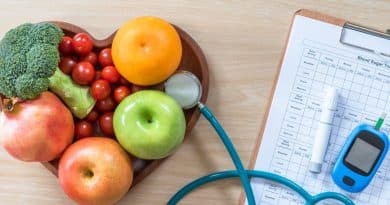Gastroparesis Diet Tips – How to Add More Vegetables Into Your Diet
If you have been diagnosed with gastroparesis or functional dyspepsia you know how painful it can be to eat vegetables. Here are two gastroparesis diet tips to help you to safely add more vegetables (and more nutrition) into your gastroparesis diet.
Tip #1 Make Your Own Vegetable Purees
If you have been diagnosed with gastroparesis you might have been advised to eat small amounts of baby food for easily tolerated and digestible nutrition. However, making your own baby food tastes better, and it’s more varied and more nutritious. You can start by investing in a powerful blender, such as the Vitamix blender, to make your own vegetables purees. You also want to invest in a fine mesh strainer and a rubber spatula to strain the purees. It is important to invest in a powerful blender because a powerful blender will make your vegetable purees silky smooth and easier to digest.
Make sure to peel vegetables with fibrous peels such as sweet potatoes. Then just boil or steam (more of the nutrients are preserved with steaming) the vegetables until tender. Let them cool and then blend them in a powerful blender, such as a Vitamix, until creamy and smooth with some of the cooking water to reach the desired consistency. Add more or less of the cooking water according to what you think will be easiest for you to digest. Then pour the puree through a fine mesh strainer using a rubber spatula to speed up the straining process.
You can add a little bit of lemon juice (if it doesn’t upset your stomach) and sea salt to add some flavor. Put your vegetable purees in glass containers with lids and they should last in the refrigerator for about 3-5 days. If you want to freeze your vegetable purees you can pour the purees into an ice cube tray which you can thaw in the future to make individual servings.
You can use 1 type of vegetable such as well cooked and peeled summer squash, peeled broccoli, peeled carrots, peeled asparagus, de-stemmed mushrooms, peeled sweet potatoes, or a combination of vegetables. Use your discernment to choose which vegetables will be the easiest for you to digest.
Tip 2# Juice Your Vegetables
Investing in a good juicer can help you to get the benefits of consuming raw fruits and vegetables without upsetting your gastroparesis symptoms.
You will still want to invest in a fine mesh strainer to strain your juice to strain out any of the remaining fiber.
Some vegetables that are good to juice are cucumber, celery, carrots, and beets. Wash and peel the vegetables and run them through a juicer. I recommend the Omega 4000 juicer for this purpose. Remember to drink your juice slowly and in small quantities to make sure you are able to tolerate it well.
I hope that these two tips will help you to add more vegetables into your gastroparesis diet and if you are interested in the kitchen appliances I mentioned in the article please check out the resources below:


